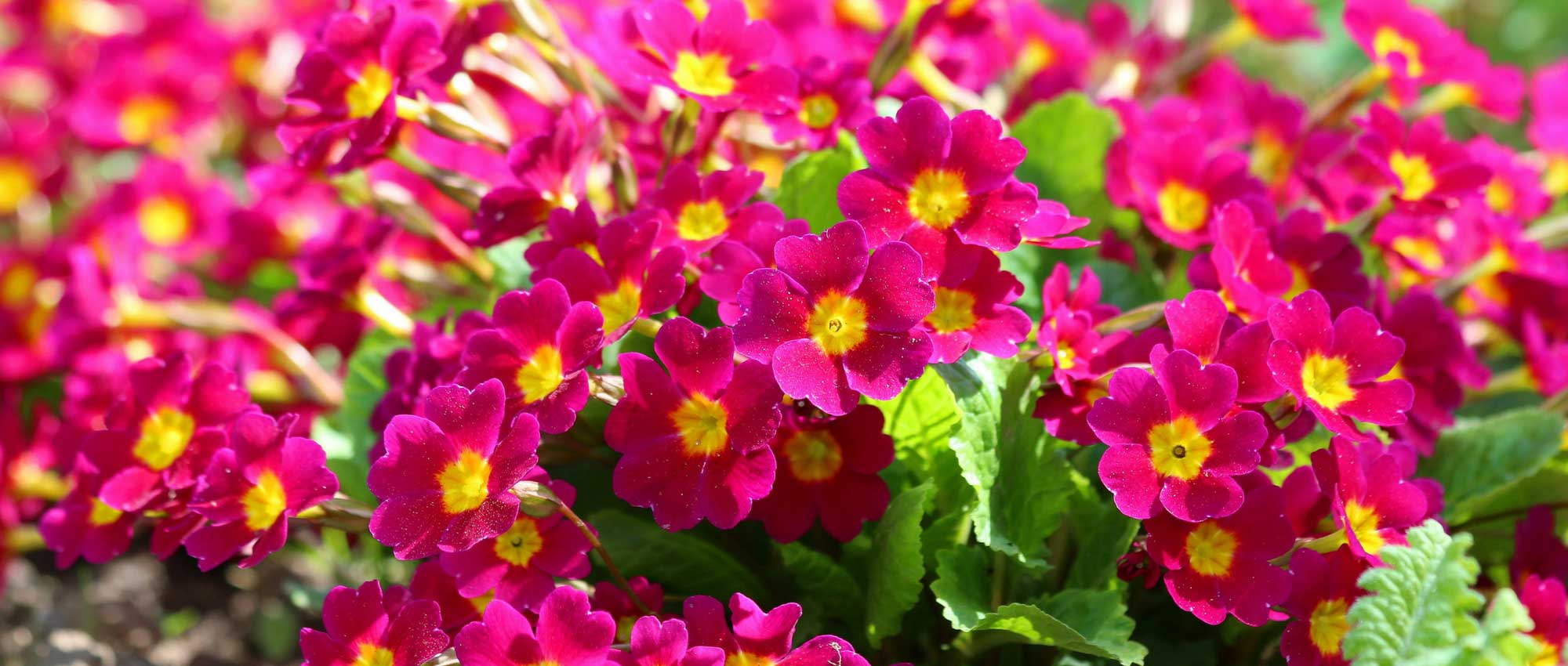
Primroses: which variety to choose?
Our tips!
Contents
Primroses comprise nearly 400 species and countless varieties. Between the brightly coloured stemless primroses and the large Asian primroses, how can you navigate and make the right choice? Some species grow well in pots, while others thrive in rockeries or by water features. Choose according to your preferences, while considering the growing conditions!
Primroses do not all flower at the same time: Primula acaulis and auricula bloom as early as the end of winter, while you will have to wait until summer to enjoy the flowering of the Asian primroses. Also make your choice based on the location: Is your garden sunny, shady, or damp? Does it include a water feature, a rockery…? If you have a pond, take the opportunity to grow candelabra primroses! If you already have a rockery, add some Primula auricula! Finally, even if you do not have a garden, some species are suitable for indoor cultivation, and others can be planted in window boxes and placed along the edge of a window.
What is the desired effect?
- To emerge from winter as quickly as possible!
To have flowers very early, even before the start of spring, opt for Primula acaulis (also known as Primula vulgaris). Flowering from February, it is the earliest species! The brightly coloured flowering of the many horticultural varieties will make you forget winter. Primula elatior offers a very natural pale yellow flowering from March, and the variety Primula elatior ‘Gold Lace Red’ has stunning red flowers with a yellow centre. As for Primula auricula, it also flowers as early as March and comes in a wide range of colours.

Primula acaulis and Primula elatior ‘Gold Lace Red’
- For summer flowers
To fully enjoy them during the summer period, choose Asian primroses. The Japanese primrose (Primula japonica) flowers from the end of spring. Discover the stunning bright pink, almost red, flowering of the variety ‘Millers Crimson’! The Tibetan Primrose (Primula florindae) offers tall yellow flowers from June. As for Primula vialii, it reveals surprising purple and red spikes from the end of spring.
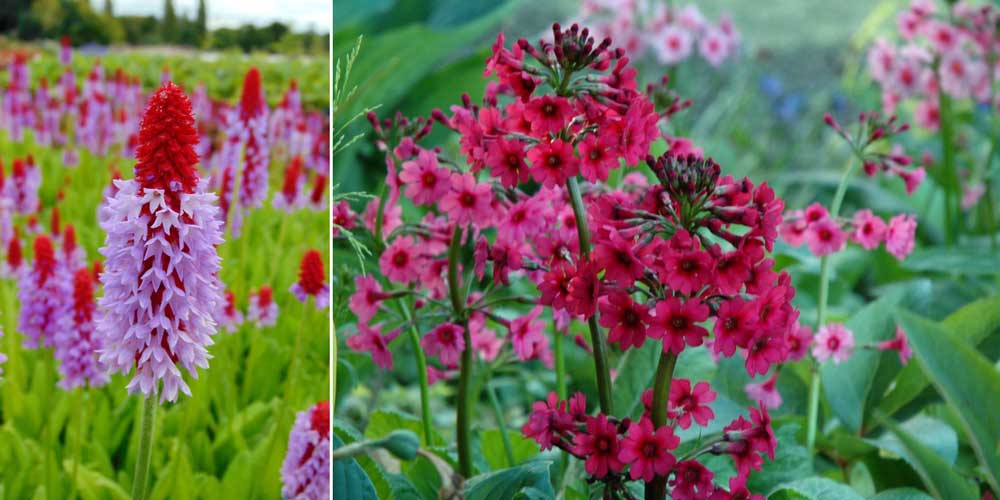
Primula vialii and Primula japonica (photo A. Breuvart)
- For an original flowering!
If for you, the primrose evokes a sense of “déjà vu”, and you are tired of its very classic, almost mundane aspect, opt for an unusual flowering that surprises and differs from ordinary primroses! Let yourself be captivated by the almost hypnotic flowering of Primula acaulis ‘Zebra Blue’! Or by that of Primula ‘Elizabeth Killelay’, with dark red petals edged in white. Also discover Primula ‘Francisca’ and its green flowers, which is quite rare when one is used to the very bright colours of primroses. As for Primula capitata, it will surprise you with the shape of its inflorescence, almost spherical but flattened on top. This gives the plant a very uncommon appearance. Finally, discover the astonishing blue flowers of Primula x tommasinii ‘You and Me Blue’, which seem to superimpose two flowers on top of each other.

From left to right: Primula ‘Zebra Blue’, Primula ‘Elizabeth Killelay’ photo (Mark Watts) and Primula capitata ssp. mooreana
- For a very natural effect
If you wish to create a naturalistic bed, forget the countless varieties and hybrids with garish colours of Primula acaulis and Primula auricula, and turn to the botanical species: the wild Primula veris (the Cowslip), the delicate Primula secundiflora or the elegant Primula denticulata… Candelabra primroses can also fit into a very natural setting, alongside Hostas or Ferns, and near a water feature. As for Primula vialii, its strange flowering gives it a rather natural style, allowing it to be integrated into these gardens: it reminds us of the wild orchids that can be found in France (for example, Anacamptis pyramidalis).

Primula veris, Primula denticulata and Primula secundiflora
- For a (really) very colourful flowering!
Conversely, for a dazzling flowering, choose from the many hybrids and cultivars of Primula acaulis (the Garden Primrose) or Primula auricula. There is only the embarrassment of choice! The variety Primula x elatior ‘Crescendo’ is also available in a wide range of colours: yellow, red, white, blue… Also discover Primula elatior ‘Gold Lace Red’ with red and yellow flowers, and Primula vulgaris Belarina ‘Cobalt Blue’ with intense blue double flowers. Not to mention Primula juliae ‘Wanda’: a spreading primrose with remarkable purple flowering.

Hybrids of Primula vulgaris – Primula elatior ‘Crescendo Red’ (photo David Monniaux)
For what situation?
- In a rockery
If you wish to plant primroses in a rockery, the Primula auricula are the most suitable. The typical species bears beautiful yellow flowers and naturally grows in the mountains, in the Alps. There are many varieties, with varied and contrasting colours. Primula marginata will also thrive in a rockery. It also grows in the Alps and prefers well-drained soils. Its flowering is very soft, in pale pink or violet.

Primula auricula and Primula marginata
- In sunny situations
Primroses should be planted in partial shade: generally, they do not appreciate direct sunlight. However, if you do not have space available in a shaded area, some species tolerate full sun as long as the soil remains cool. This is the case for Primula bulleyana and Primula florindae. When planted in moist ground, for example near a pond, they will withstand direct sunlight.
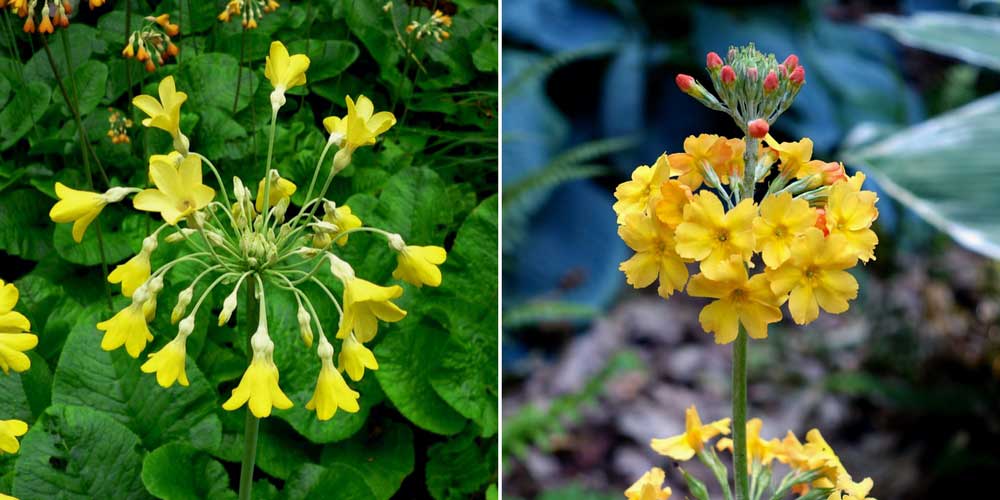
Primula florindae (photo Stan Shebs) and Primula bulleyana
- By the pond
Asian primroses enjoy being planted near a pond. Choose the yellow flowers of Primula florindae or the tiered orange flowering of Primula bulleyana! Their tall blooms in bright tones have a very natural and wild appearance. Primula vialii also enjoys moist soils but should not be planted too close to a water source.
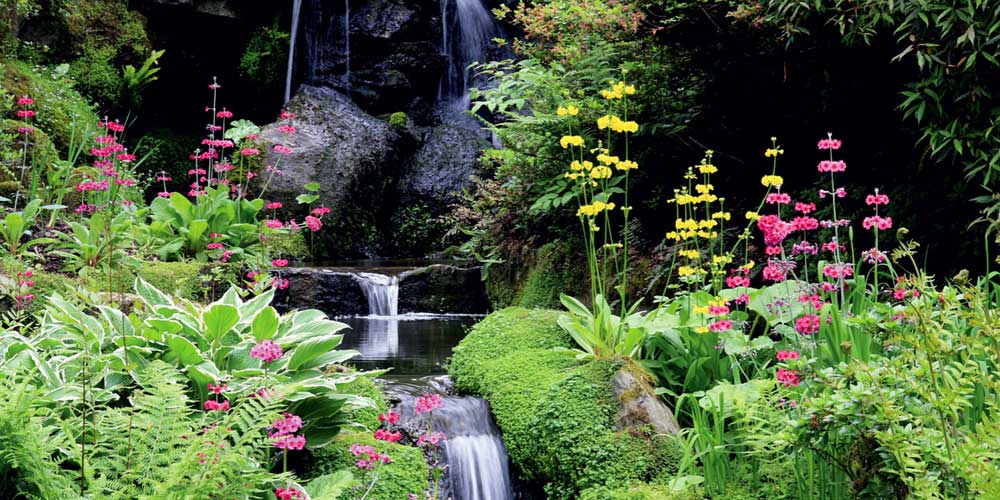
Candelabra primroses enjoy being planted in moist ground
- Indoors
Even if you do not have a garden, you can still grow primroses! Primula obconica and Primula malacoides can grow indoors, provided you avoid excessively high temperatures. Place them in a bright location, out of direct sunlight, and at a temperature below 18°C.

Primula obconica (photo Rexness) and Primula malacoides (photo Drew Avery)
- In pots or containers
Primula auricula or Primula acaulis are small plants that can be grown in pots. They will add colour to a windowsill or the edge of a terrace. Pair them with some annuals or perennials, such as pansies.
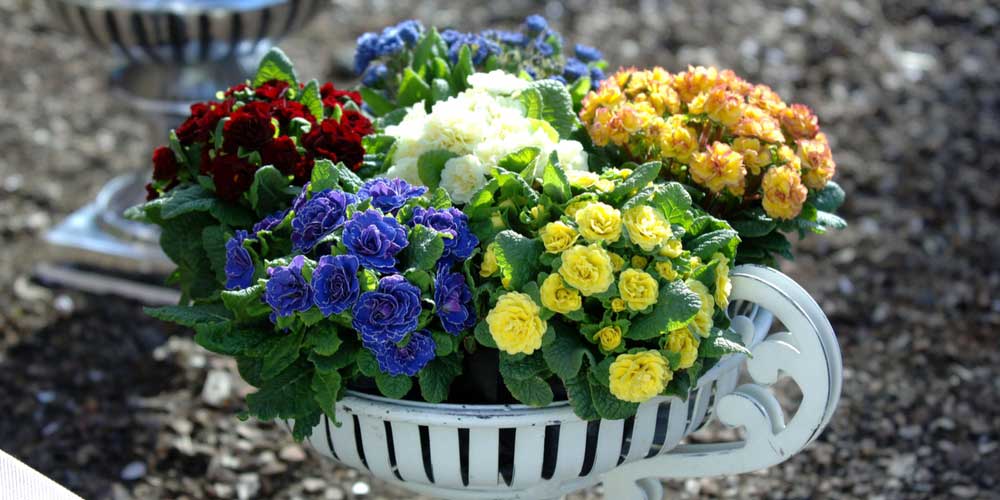
The Garden Primrose adapts well to pot cultivation! Here, Primula vulgaris ‘Belarina’
Discover other Primula - Primroses
View all →Available in 0 sizes
Available in 1 sizes
Available in 1 sizes
Available in 1 sizes
Available in 1 sizes
Available in 1 sizes
Available in 1 sizes
Available in 0 sizes
Available in 1 sizes
Available in 0 sizes
- Subscribe!
- Contents
































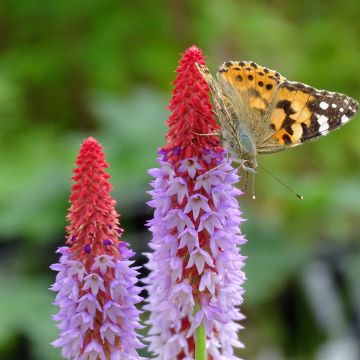

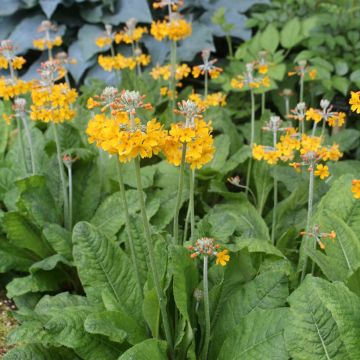
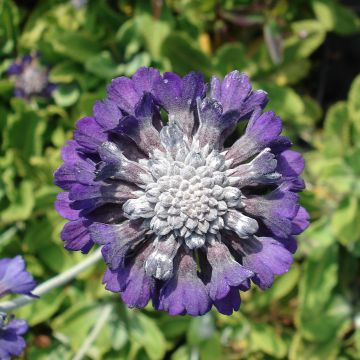
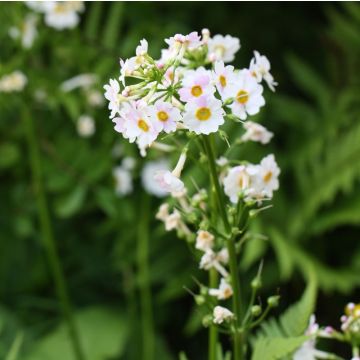
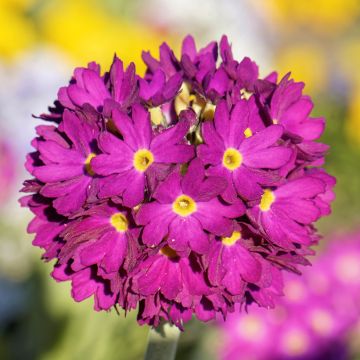
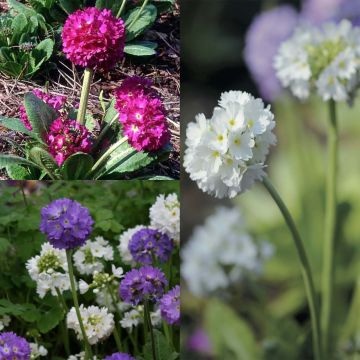
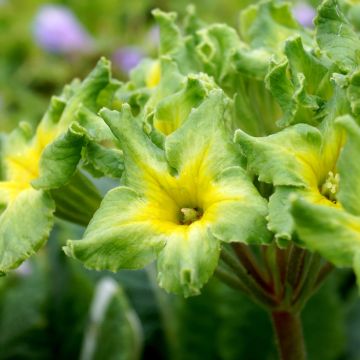

Comments